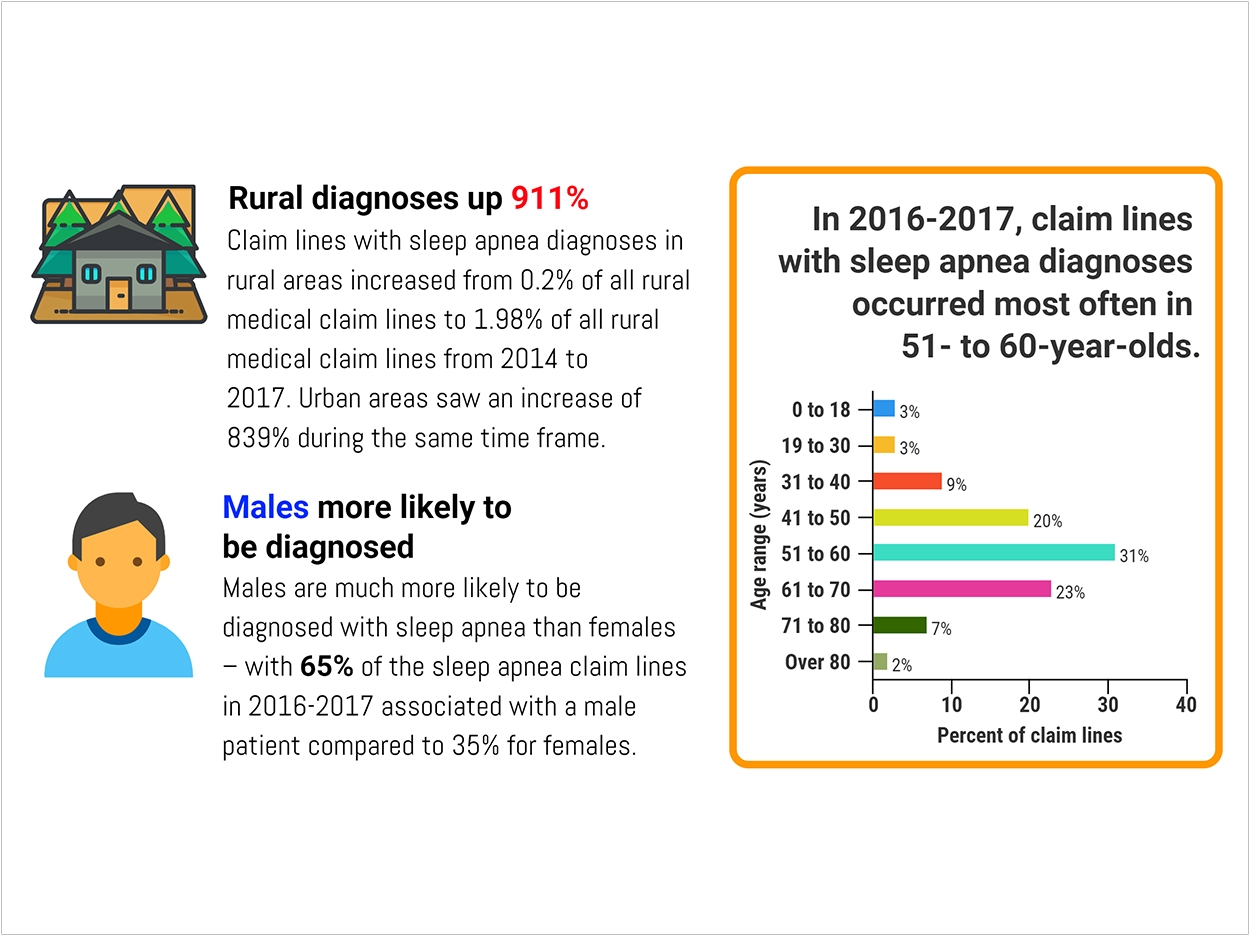
From 2014 to 2017, private insurance claim lines with a diagnosis of sleep apnea increased by 911% in the rural United States, reports FAIR Health. Urban areas recorded an 839% increase in the same timeframe. Nationally, claim lines with a sleep apnea diagnosis grew 850%.
Also, rural diagnoses of sleep apnea grew from 0.2% of all rural medical claim lines to 1.98%. In urban settings, the increase was from 0.13% of all urban medical claim lines to 1.24%. In the nation overall, the growth was from 0.14% of all claim lines to 1.33%.
“The data alone do not reveal the reasons for the increases in claim lines including sleep apnea diagnoses,” said FAIR Health president Robin Gelburd. “The reasons may include more people with sleep apnea, more public awareness of the disorder, better detection by providers, better diagnostic technology, or a combination of factors. We do our studies in part to prompt other researchers to delve more deeply into questions like these.”
FAIR Health based its study on its database of more than 25 billion privately billed healthcare claims. According to the organization, it is the nation’s largest repository of private healthcare claim records.
The study is particularly timely in light of the recent National Transportation Safety Board finding that engineer fatigue resulting from sleep apnea caused a Long Island Rail Road crash in Brooklyn and a New Jersey Transit train crash in Hoboken, which killed one person.
Other findings from the study include:
- Males are much more likely than females to be diagnosed with sleep apnea. In 2016 and 2017, males accounted for 65% of sleep apnea claim lines, while females accounted for 35%.
- Those between 51 and 60 years old accounted for 31% of sleep apnea lines and assumed the largest share of the eight age groups studied. Patients between 61 and 70 years old represented 23% of claim lines, while those 41 to 50 years old accounted for 20%.
- In 2017, the states with the most sleep apnea claim lines as a percent of all medical claim lines by state were (ranked from most to least) Maryland, Idaho, Utah, Arkansas, and Iowa. The states with the lowest proportion of sleep apnea claim lines were (from least to most) New Hampshire, Minnesota, Massachusetts, Vermont, and Hawaii.
- In 2016 and 2017, the most common diagnoses associated with sleep apnea on claim lines were diabetes, hypertension, respiratory and chest symptoms, dorsalgia, high cholesterol, general fatigue, joint pain, and cardiac dysrhythmias.
- The three most common and costly devices associated with sleep apnea diagnoses were (ranked from most to least): continuous positive airway pressure or CPAP devices, disposable filters used with positive airway pressure devices, and headgear used with positive airway pressure devices.
“Sleep apnea is a public health issue of increasing interest and concern,” said Gelburd. “FAIR Health is ready to contribute its data resources and analytical capabilities to help researchers, policymakers, and others address this issue.”
Related Articles
Severe Obstructive Sleep Apnea Hits Inner-City Children the Hardest
Obstructive Sleep Apnea Causes Complications in Dental Implants
Anti-Nausea Drug Could Treat Sleep Apnea












